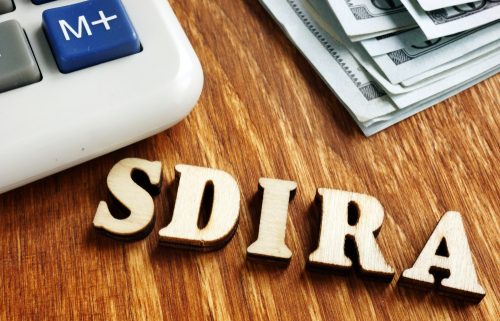How Does a Self-Directed IRA Fit into a Traditional Retirement Strategy?
Is a Self-Directed IRA at odds with a traditional retirement strategy? To answer that question, we have to first answer what it means to have a “traditional retirement strategy.” And according to the numbers, the results on those are mixed. Many Americans don’t even have a retirement strategy, for example, and even at age 65, the average retirement savings is just $100,000—well short of a nest egg that can continue to provide a basic living throughout one’s retirement.
For many, the idea of a “traditional retirement strategy” is simple—put aside some money from the paycheck, often in the retirement account provided by an employer, such as a 401(k) matching account. And for many, this works, especially if the company does offer a generous matching plan. But that’s not all that’s encompassed in a traditional retirement strategy. This strategy often focuses on a stock-heavy approach that, while effective over the long term, is not always guaranteed to lead to success on a shorter timeline.
How Self-Directed IRAs can Impact a Retirement Strategy
The most powerful way a Self-Directed IRA can impact a retirement strategy is through diversification. For example, someone with a 401(k) through their company might invest in stocks and bonds, which means they are beholden to these markets for their returns. But they can diversify into different asset classes with a Self-Directed IRA in which they hold real estate.
Owning an asset like real estate not only hedges against inflation but will provide a completely different type of return. Real estate can generate cash flow through incoming tenant checks, while stocks are more dependent on dividends and appreciation for their returns. This isn’t to say that one strategy is inherently better than the other. But by diversifying their strategies, a retirement investor can reduce the overall risk of their portfolio.
Can Self-Directing an IRA Give Retirement Investors the Charge They Need?
For many investors, simply acquiring a strategy at all is the challenge. The average retirement savings for someone turning age 50 is just $60,000 these days, suggesting that not enough people are getting an early start on retirement. But turning 50 is not a reason to avoid investing in retirement, either, simply because you can’t enjoy the cumulative returns of someone who’s been investing since age 18.
Using a Self-Directed IRA of your choice will allow you to make use of an advancing income throughout working life. For example, a Traditional or Roth IRA allows “catch-up contributions” that expand the amount of contributions you can make. Using these with a Self-Directed IRA gives you more flexibility for putting aside money for retirement, making it part of a complete overhaul to your retirement strategy.
For some, such as self-employed individuals, it often comes down to the will to sit down and establish a retirement account. The prospect of using a Self-Directed IRA can sometimes be an incentive to do so. For example, an IRA will mean working with a Self-Directed IRA administration firm, which in turn means that much of the paperwork will be out of your hands. It can be a simple solution for taking action that does not require a lot of head-wringing on the part of the investor, which in turn leads to more peace and security on the part of the investor.
A Self-Directed IRA can fit into a traditional retirement strategy by adding diversification to an existing retirement portfolio. But it can also be a way for people to take control over their finances. Interested in learning more about Self-Directed IRAs? Contact American IRA, LLC at 866-7500-IRA (472) for a free consultation. Download our free guides or visit us online at www.AmericanIRA.com.









